Previous
Achille Castiglioni, curiosity as a way of life


Your dream house is one step away from you.
Subscribe to our newsletter and get 10% off orders of at least 100€!
Enjoy it and don’t miss out on our offers and updates.


A quarter of a century; this is how old Pablo will be this year. But don’t expect a party with candles to blow out: I bet that amongst all the balloons and garlands on the table you will find his latest lamps.
Founded in San Francisco by the Venezuelan industrial designer Pablo Pardo, the brand has represented a new benchmark for the world of lighting design since the first products came out in 1993 – and strives to maintain its high standards.
Simplicity and functionality: Pablo’s design principles are those which guide any well thought out project, whether it’s a table lamp, wall lamp or floor lamp. For example: the meticulous choice of materials in order to come up with the best combination for each project, backed by great technical ability.
A good designer, however, has always the bigger picture in mind. Designed as unique pieces and to encourage interaction, Pablo’s work aims to restore and enhance social interaction between the end-consumers and their surrounding environment.
As we know, we cannot build a personal relationship in a mere moment, in fact it takes constant dedication and balance. For this reason, Pablo’s mission-statement is to design objects that stand the test of time and that influence their surroundings for years to come, creating a sense of harmony through light.
Pablo’s first product has an understated, almost demure name – but really it’s a declaration of intent. The fact that it’s part of the permanent collection of the MoMa in San Francisco proves this theory.
Designed in 1993, the Piccola lamp is inspired by the architect Ludwig Mies van der Rohe’s principle less is more, which Pablo Pardo has always made his own and expanded upon.
The lamp’s base is clad in soft Italian leather and is entirely malleable. Piccola is made to stay in any position, constantly holding its aluminium lampshade in perfect balance and parallel to its base.

The Circa lamp never loses its balance either. It came on the scene twenty years after the pioneer Piccola and is primarily a combination of a table lamp and a desk lamp.
This doesn’t destabilize it, on the contrary: its flat LED disk moves easily when it’s touched and this adapts the intensity of the light to suit your needs.
So, why not go further? Thanks to its integrated USB port, Circa doubles as a charger for different devices. It has definitely earned its NY NOW Excellence in Product Design 2013 award, don’t you think?
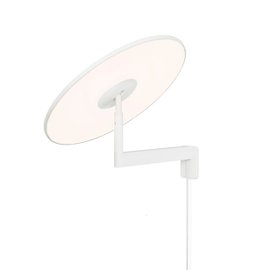

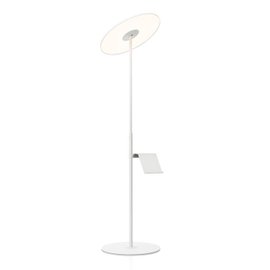


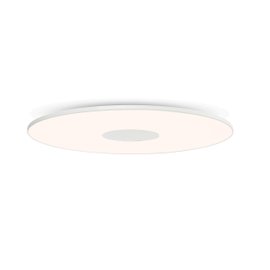
Pablo’s lamps consist of a few, a very few essential parts, as a matter of fact: you may as well show them off.
Peter Stathis and Matthew Boyko who designed Superlight and Dana Cannam who designed Clamp must have thought something similar.
These two lamps are made of materials which are bound to seem severe: the first one is in aluminium and steel and the second is in oak or walnut and fabric. Yet, the red cable that is wound around Clamp and Superlight’s doodle-esque silhouette aren’t inconsistent with this aesthetic. Both pieces use these quirks to their advantage.
It’s precisely that je ne sais quoithat captures your attention for a moment, adding interest to a desk, bedside table or table for years to come.



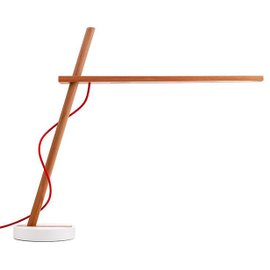

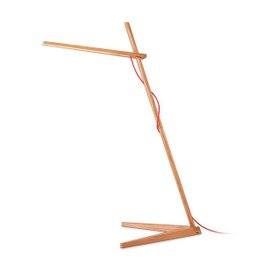
Oak is mellow and rigid at the same time. Or perhaps it’s the texture of the fabric that that strikes you. An empty frame that doesn’t need to hang.

Studio Pablo’s ambitious idea has become an object – an entire series actually: the Contour collection – capable of lighting up and decorating a room, as well as storing its secrets. And all this while it bewitches your guests.
It’s a minimalist lamp and when it’s switched off you probably won’t be able to guess what it’s meant to be. You might take it for a frame or a geometrical ornament. However, Contour is highly technological: its cutting edge LEDS are energy saving and run for hours on end.
Less is more states Pablo: its catalogue shows that this isn’t just an empty statement, but the underlying principle that has been behind the brand’s designs and production for the last twenty five years.
To turn a goal into reality – an award-winning and record-breaking firm – Pablo has decided, helped by the expertise of top international designers, to strip every design down to its essence, to highlight its two main components: light and form.



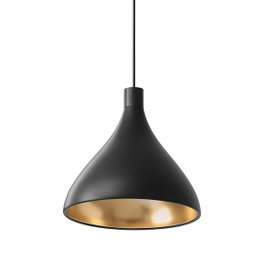





Lighting
Pablo
Dana Cannam
Peter Stathis - Matthew Boyko
Rooms
Pablo Studio
Style Basic
A neutral palette for multicolor effects
Carmine Deganello - Pablo Studio
Home Accessories
Gifts
Outdoor
Pablo Pardo
Pablo Pardo - Fernando Pardo
Back to Work – Design Edition

 Back to
Back to
Size*
Quantity*




